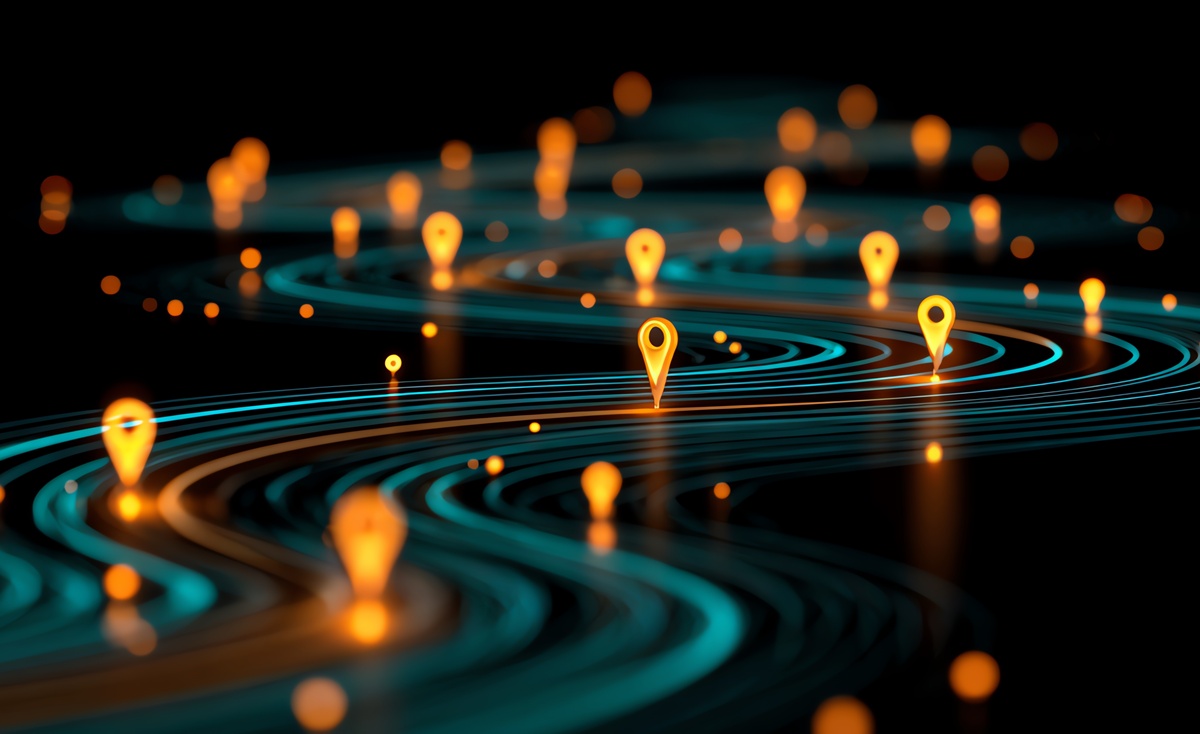October 27, 2025
Digital Customer Journey Mapping: Create, Analyze & Optimize the End-to-End Experience

Customer journeys don’t follow the rules anymore. They zig. They loop. Sometimes they disappear altogether. Someone might spot your brand on Instagram, check prices on their phone, read reviews over coffee, then finally buy from a laptop two days later. Same person, five channels, half a dozen chances to lose them.
That’s why digital customer journey mapping matters so much. It isn’t about drawing the perfect funnel. It’s about uncovering what really happens between all those messy, unpredictable steps. A customer journey map turns data into a story. It shows what people do, what they feel, and where friction quietly sneaks in. Once teams can see the whole picture, everything starts to click.
Just look at Coca-Cola, which used real-time customer journey mapping to lift revenue by more than a third. Hilton is using tools to listen to guests while they’re still checked in, fixing problems before they check out.
Modern customer journey mapping tools make this visibility possible on a big scale. They bring analytics, behavior, and sentiment together in one view. That’s how strong brands meet people where they actually are, not where spreadsheets say they should be.
What Is Digital Customer Journey Mapping?
Think of digital customer journey mapping as a wide-angle lens on how people really move through your business. It’s half detective work, half storytelling.
A customer journey map tracks every step online, from that first search or scroll to the point they buy, use, or leave a review. It’s a record of emotion as much as behavior: the excitement, hesitation, and friction that numbers alone can’t explain.
In today’s world, that story rarely runs in a straight line. A shopper might start on mobile, switch to desktop, ask a chatbot a question, then head back to an app days later. That’s why customer experience journey mapping has evolved. It’s now a way to understand the entire digital ecosystem that shapes your customer’s decisions.
What makes it digital is the layer of technology behind it. Every tap, chat, or purchase creates a signal. Tools like Adobe Journey Analytics, Qualtrics, and the mapping templates used in Atlassian’s workshops turn those signals into a single, connected view. These customer journey mapping tools help teams see when and where to act.
The point is perspective. Once you can see how the experience really unfolds, you can start to design it with purpose.
The Benefits of Digital Customer Journey Mapping
When you understand how customers really move through your digital world, everything changes.
You start seeing patterns in the small, invisible moments that decide whether someone completes a purchase or disappears. That’s what digital customer journey mapping delivers: clarity, control, and a foundation for real improvement.
1. It drives measurable growth
Coca-Cola proved it. After building a real-time customer journey map, the company connected its data, creative, and timing, and lifted revenue by more than 36%. Email open rates rose, conversion jumped, and re-engaged shoppers converted at almost 90%. When every step of the journey fits together, growth follows naturally.
2. It speeds up and smooths out the experience
Signify the company once known as Philips Lighting, reworked its digital setup using journey analytics. The impact was immediate: pages loaded faster, customer profiles lined up, and online conversions jumped by nearly a third. Their team learned to spot friction before it turned into frustration, and fix it quietly, before anyone noticed.
3. It makes service feel human again
Hilton uses live feedback tools to listen while guests are still checked in. When someone mentions a missing towel or a noisy room, staff can fix it on the spot. That single shift from post-stay surveys to in-journey action changed how Hilton defines customer care.
4. It builds lasting relationships
In B2B settings, customer journey mapping helps companies like ServiceNow close the loop. Their system routes every piece of feedback to the right team automatically. NPS scores rise by 12 points when follow-ups happen, and account value grows by more than 25%. The message is simple: when customers see that you’re listening, they stay.
5. It unifies your digital landscape
For many brands, conversations happen everywhere: email, social DMs, chat, and phone. Believe Consumer Goods consolidated more than 50 of those channels into one dashboard. Visibility went up to 99%, response time dropped, and customer satisfaction soared.
Digital Customer Journey Mapping: Step-by-Step Guide
Digital customer journey mapping isn’t a task you tick off once. It’s more like maintenance, something you come back to over and over. Every time you rebuild it, the view gets clearer. You start to see how people really move through your digital space, not how you hope they do. Each click, pause, and device switch adds another clue to the story.
1. Start with purpose
Before you start, think about what you really want to find out. Is it why people stop at checkout? Or why new users give up halfway through onboarding? Whatever it is, build one customer journey map for that single question. Keep it small. When it’s too wide, you stop seeing the details that matter.
Then pick something you can actually measure like conversions, retention, satisfaction, doesn’t matter. If it can’t be tracked, the customer experience journey mapping work ends up forgotten on a wall somewhere.
2. Collect what’s real
Go looking for evidence. Start with numbers: analytics, traffic, funnels, drop-offs, chat volume. But don’t stop there. Read support tickets. Listen to call recordings. Scroll through reviews. Watch a few session replays. That mix of data and raw emotion is where the truth hides.
Hilton’s team found this out the right way. By collecting feedback while guests were still checked in, they uncovered small, fixable problems that surveys missed, things like towel quality or noise levels. Those quick adjustments lifted satisfaction scores almost overnight.
3. Build customer personas and segments
Forget the stock-photo personas. You don’t need “Tech-Savvy Tina” or “Budget Brian.” You need evidence: patterns pulled from analytics, CRM data, and real conversations.
Look for behavior that repeats. Who buys once and vanishes? Who reads five pages before adding to cart? Who uses only mobile? Those clusters become your segments.
Each one tells a slightly different story, and that’s fine. Customer journey mapping isn’t about making everyone the same. It’s about understanding how different types of people move through your world.
4. Define the journey stages
Every journey follows a rhythm. Awareness, consideration, decision, onboarding, retention, advocacy: they’re the usual stops. But don’t borrow anyone else’s version. Write your own. Let your data, not the framework, decide where each stage begins and ends.
Ask what’s happening in each one.
- Where do customers first hear about you?
- When do they hesitate?
- What triggers action or abandonment?
Map the touchpoints that sit inside those stages: search, ads, emails, app notifications, checkout. Capture the emotion around them. The delight when something loads fast. The irritation when a password reset doesn’t arrive.
5. Map touchpoints, channels, and devices
Now dig into the detail of every place someone connects with you.
Search results. Instagram stories. Live chat. Push notifications. Support calls. Even a QR code on packaging that takes them back to your site. Write it all down.
Pay attention to how people move between devices. They might scroll on a phone in the morning and finish the purchase later on a laptop. Sometimes it happens the other way around. Each switch creates a chance for friction. Smooth transitions keep things moving. A small delay or broken link can stop the journey cold.
6. Capture emotions, pain points, and opportunities
As you map each stage, jot down what customers are likely to feel. Frustration, curiosity, confusion, excitement, they all matter. Pull clues from surveys, chat logs, social comments, or support emails. Anywhere people speak honestly gives you better insight than numbers alone.
Then, match those feelings to actions. A spike in cart abandonment might not be about price. It might be hesitation, a broken flow, or simply poor timing. When you connect behavior with emotion, patterns start to make sense.
Shake Shack’s research team discovered that a drink name confused customers. One quick rename, from “Bergamot Lemonade” to “Harvest Berry Lemonade”, doubled sales in days.
7. Visualize the digital customer journey map
Once you’ve got the notes, turn them into something everyone can see.
Use a simple timeline, or a swim-lane chart showing each channel along the way. Mark the high points and low points. Color helps.
Include three tracks:
- What the customer does
- What they feel
- What your team is doing behind the scenes
That third one is key. It’s where most friction hides, the internal hand-offs, delays, or policy gaps that customers never see but always feel.
Tools like Atlassian’s mapping templates or UXPressia can speed this up. But even a whiteboard snapshot can be powerful if it gets everyone looking in the same direction.
8. Align internal teams, processes, and technology
Get the right people in the room. Marketing. Product. UX. Service. Data. IT. Everyone who shapes a piece of the experience. Each team sees only part of the picture, and that’s the problem. When they sit together, gaps appear that no one noticed before.
Don’t just track what customers see. Look at what’s happening behind the scenes: the systems, the handoffs, the approvals that make or break the flow. Once those are visible, digital customer journey mapping starts turning into real change instead of another workshop deliverable.
BMW used this approach when it rebuilt its digital ecosystem. By focusing on “precision, consistency, and relevance,” the company boosted lead requests and gave every team a shared understanding of what customers actually experience.
9. Implement improvements and orchestration
Digital customer journey mapping doesn’t mean much if it just sits on the wall. You need to use it. Start small with ideas you can test quickly. Maybe send a push message 20 minutes after cart abandonment to see if conversions rise. Or simplify an onboarding form to see if more people finish it. Test with real customers, use real data, keep the feedback loop short. Each test adds another layer of truth to your map.
Coca-Cola’s team worked this way, using real-time orchestration tied to live behavioral signals. The payoff was huge: a 36 percent increase in revenue and an 89 percent conversion rate among re-engaged shoppers. When timing, message, and intent align, results follow. Keep your focus tight: fix what matters most, prove the outcome, share it, then move to the next stage. Big change usually starts with a few quick wins that stick.
Keep the focus narrow: fix what matters most, prove impact, share wins, and move to the next stage. Big transformations are just a series of small, fast improvements that stick.
10. Monitor, measure, and iterate
Set up dashboards that show how each stage performs: conversions, churn, time-to-value, sentiment. Check them often. Monthly for numbers, quarterly for patterns, yearly for direction.
Hold review sessions with your teams. Ask what changed. What improved? What didn’t? Update the map each time so it reflects reality, not last year’s assumptions.
ServiceNow runs on that principle. Their CX system sends feedback to the right teams automatically across 17 programs, 31 workflows, and more than ten thousand follow-ups. Accounts that get timely responses grow 25 percent faster, and NPS rises by twelve points. That’s what happens when monitoring becomes habit, not task.
Tips for Digital Customer Journey Mapping
Every digital customer journey mapping project feels exciting at the start Then reality sets in. Data gets messy. Timelines stretch. Someone asks, “So what do we do with this now?”
Here’s what helps teams stay on track.
- Start small: Don’t try to map every journey in the business. Pick one that really matters like the first purchase, onboarding, or subscription renewal. Nail that before moving on.
- Use real evidence: Interviews, analytics, chat logs: whatever brings you closer to the truth. The strongest customer experience journey mapping work blends numbers with human context.
- Get everyone involved early: Marketing sees one side of the story. Product sees another. Service sees what happens when things go wrong. Bring them together. Co-ownership makes the map stronger and keeps it alive.
- Choose the right tools for your scale: Use what you have. A notebook, a whiteboard, sticky notes. That’s fine. When things grow, add analytics, heatmaps, or something more advanced. Let your customer journey mapping tools grow naturally, not all at once.
- Keep it alive: Look at the map every few months. Update what’s changed, cut what’s old. Share wins, fix what slipped. A map that gets touched often stays alive. One that doesn’t just fades away.
Evolving Trends & Opportunities
The digital journey keeps moving. Tools get smarter. Data gets cleaner. But expectations keep rising. People jump between devices and channels without noticing, and they expect brands to follow. Staying relevant means keeping pace with that flow.
- Real-time journeys: Speed is the difference now. Coca-Cola’s real-time orchestration showed what happens when you match timing with intent: revenue up more than a third, engagement through the roof. Acting in the moment turns customer data into actual experience. Wait too long, and the signal fades.
- AI that listens before it talks: Artificial intelligence is changing how journeys unfold, though not always as expected. Old bots answered questions; new systems try to predict them. But people still want the human touch. Nearly nine in ten say they prefer talking to a person when the issue matters. The balance lies in using automation for reach and humans for trust.
- The rise of true omnichannel: Customers don’t care about “channels.” They care about continuity. Start a return online, finish it in-store. Begin a chat on the app, pick it up on the phone without repeating yourself. Customer experience journey mapping has to follow those jumps and stitch them back together. Good customer journey mapping tools help here, tracking interactions across systems, surfacing gaps no one owns, showing where the hand-offs break.
- Privacy as part of the experience: The death of third-party cookies didn’t kill personalization. It made it honest. Brands are learning to build with first-party data and explicit consent. The deal is simple: share data, get a better experience. Break that trust, lose the relationship.
- Connected journeys, inside and out: The next big shift isn’t about customers at all, it’s about everyone who shapes their experience. Employees. Partners. Suppliers. Their workflows feed into the same ecosystem. If one link fails, the whole chain feels it. Forward-thinking teams are mapping these internal and external journeys together, looking for overlaps that create friction or opportunity.
Tools will keep evolving. Data will keep getting richer. The principle stays the same: digital customer journey mapping still depends on empathy, timing, and honesty. Get those right and every new trend simply helps you deliver them better.
Seeing the Journey, Not Just the Data
In the end, digital customer journey mapping is about seeing people again.
Behind every metric is a moment. A thoughtful customer journey map helps you catch those moments before they disappear. That’s the difference between reacting to numbers and shaping what happens next. Make mapping a routine. Listen. Adjust. Repeat.
Over time, the patterns start looking less like charts and more like people: actual people, with motives, frustrations, and those small wins that no dashboard ever tells you about.
That’s the point of customer experience journey mapping: to reconnect numbers with meaning. Start small. Map one journey. Fix one thing that matters. Then do it again.




